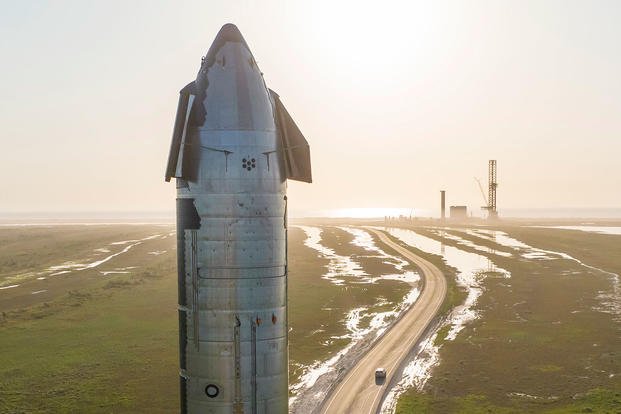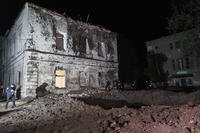The Department of Defense is looking for a new home for SpaceX’s Starship, launching the process to determine what the environmental impact would be to allow the world’s most powerful rocket to launch from Florida's Space Coast.
Led by the U.S. Air Force, which includes the Space Force, but working with NASA, the Federal Aviation Administration and the U.S. Coast Guard, what is officially called an Environmental Impact Statement (EIS) has the most rigorous requirements when weighing the detriments a project might have on its surroundings.
The Air Force detailed its plans for the EIS on a new website: spaceforcestarshipeis.com.
For now SpaceX continues to attempt test launches of the Starship and Super Heavy rocket from its Starbase facility in Boca Chica, Texas. The company had two launches in 2023 in which the rocket generating more than 16 million pounds of thrust made it off the launch pad, but ultimately ended with the hardware exploding minutes after takeoff both times.
The first of the two launches created so much power on liftoff that it destroyed the launch pad, prompting major changes that ultimately paid off for the second launch, with the pad sustaining little damage. A third attempt to get Starship to complete its suborbital test flight could come before the end of next month.
The sheer power of Starship, though, had NASA raising flags as SpaceX has been constructing a tower at Kennedy Space Center’s Launch Pad 39-A to support future Starship flights. This is the same pad where it launches Falcon 9 and Falcon Heavy launches, but more importantly for NASA the only SpaceX launch pad at the time that could support human spaceflight.
That led to SpaceX constructing a second support tower at nearby Cape Canaveral Space Force Station’s Space Launch Complex 40 that could support human launches, although it has yet to complete it.
And while SpaceX may one day use KSC for Starship launches, the Space Force is keen to make sure there’s no delay in its ability to use the massive rocket for its own purposes.
So the EIC is considering three options.
One is to transition Space Launch Complex 37 after it supports the final United Launch Alliance Delta IV Heavy rocket mission, expected to fly this summer.
The second is to construct a new launch pad called Space Launch Complex 50 that would be located between SLC 40 and SLC 37 on currently undeveloped land.
The final option is to do nothing.
An EIC process can take years sometimes. It was one of the processes SpaceX officials feared would be required when it was pursuing the rights to launch from Texas at the end of the less rigorous “Environmental Assessment” under the National Environmental Policy Act.
The next steps in the process are a series of public meetings. The first is on Tuesday, March 5, from 4-7 p.m. at the Catherine Schweinsberg Rood Central Cocoa Library, followed Wednesday, March 6, from 4-7 p.m. at the Titusville Civic Center and Thursday, March 7 from 4-7 p.m. at the Radisson Resort at The Port in Cape Canaveral. A virtual meeting on Tuesday, March 12, at 6 p.m. Eastern is also planned, according to the website.
Starship is SpaceX’s planned fully reusable rocket to eventually replace its Falcon family of rockets. Elon Musk’s goal with the vessel is to enable settlement of Mars eventually, and the rocket has the capacity to fly up to 100 passengers or up to 500,000 pounds of cargo to space, which is more than three times the payload capacity of Falcon Heavy.
The capacity of potential point-to-point flights on Earth, though, that could rapidly deploy cargo or even troops also has the Department of Defense interested in Starship’s success.
The purpose of pursuing the EIC is “to advance U.S. space capabilities and provide launch and landing infrastructure in furtherance of U.S. policy to ensure capabilities necessary to launch and insert (Department of the Air Force) payloads into space,” according to the website.
Among the needs listed for finding a new launch site are to ensure access to space without compromising current launch capability, maximize DOD space transportation infrastructure by the private sector, maximize the effectiveness and efficiency of that infrastructure, reduce costs to the DOD and encourage commercial space activities.
The notion that government regulation was hampering SpaceX and other commercial companies’ progress was the subject of discussion at last month’s Space Mobility Conference in Orlando hosted by the Space Force.
“I really don’t get the sense that at this moment in time, we’re ready — that our government is ready and we need to encourage the appropriate investment and appropriate attention at the national level to enable what’s coming,” said SpaceX senior advisor Gary Henry, who advised the company’s goals to launch hundreds of Starships from several launch pads in the coming years once it’s up and running.
The call to action was echoed by military members of the panel, including Air Force Col. Gabe Arrington, chief of disruptive technology.
“We need to look within ourselves and within our organizations that we represent, and figure out how we can enable this critical capability to be expedited,” he said.
_____
©2024 Orlando Sentinel. Visit orlandosentinel.com. Distributed by Tribune Content Agency, LLC.











